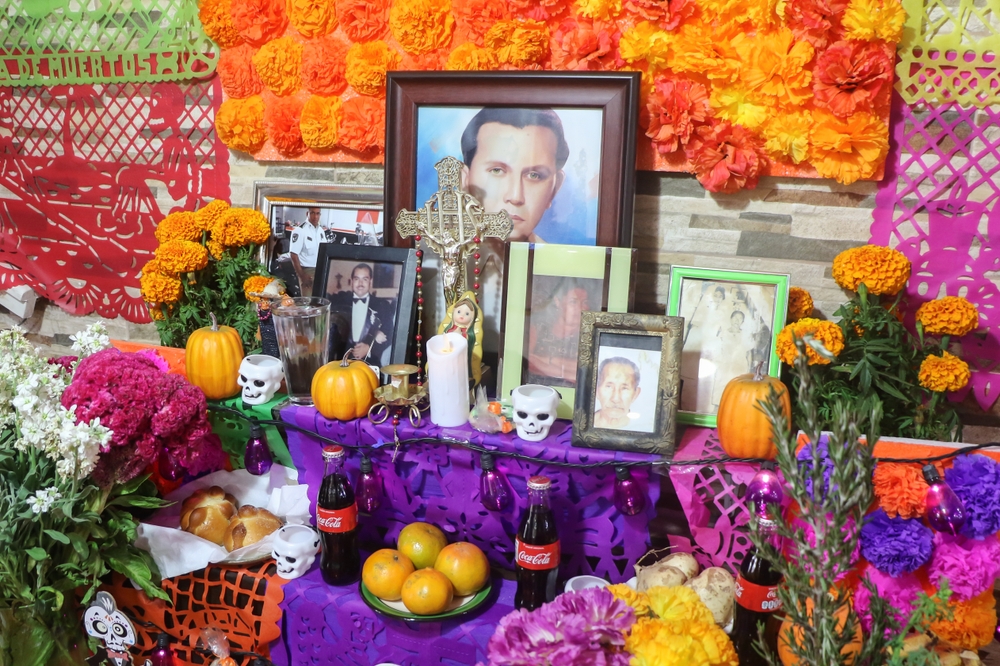Religion: Folk and Traditional Religions
Animism
Introduction: Animism is practiced by Mexico's many indigenous tribes, and it has been for centuries. Animism is the belief that all things, living and non-living, have a spirit, and that these spirits must be respected and appeased to ensure good health, prosperity, and protection. Mexican tribes honor several gods and goddesses who are linked to the natural world, making animism a polytheistic belief system.
Origin: Animism has been a belief in Mexico since ancient times—as it has been throughout the world—and long predates organized religions. Cultures closely tied to the land, often through agricultural practices, associate natural elements with spirits. These may be helpful or harmful and need to be appeased and honored regularly in return for favorable treatment.
History: Animism has a long history, with Mexico's different ethnic groups including the Náhuatl (or Nahua), Maya, and Zapoteco developing their own variations of practicing the belief. In the 16th century, Spanish colonists came to the country and attempted to suppress animism while introducing natives to Catholicism, but indigenous groups continued to practice their traditional religion.
Adherents: Animism is practiced throughout the country's indigenous ethnic groups, of which there are believed to be about 65. Mexico's largest indigenous tribes, the Nahua, Purépucha, Mixtec, and Rarámuri, have animistic beliefs and attribute spirits to nature. The total population of all tribes is estimated to be about 15 percent of the country's population.
Belief System: For the Maya, nearly everything in the world contains k'uh, or sacredness, with lesser spirits recognized along with major deities like Itzamna, god of fire and creator of the earth. The veneration of ancestor spirits are among many tribes' animist beliefs, as souls are believed to exist after death. The Nahua link their deities with nature, agricultural processes, and the universe, with rituals meant to create harmony with spirit forces. The Zapoteco's most important gods are linked to fertility of the land, including a rain god and god of corn.
Practices: Animism is practiced through public rituals, such as ceremonies to honor the spirits of ancestors. Private rituals include offerings made at home altars or shrines, like those to deceased ancestors. Protecting the environment and maintaining a harmonious bond with nature are central aspirations of indigenous tribes, done through offerings and dances to nature spirits, among other practices. Offerings by some tribes include sacrificed animals, and historically, human sacrifice as well—regarded as the key to the health of the world.
Rituals, Events, Celebrations
- Día de Muertos (Day of the Dead): This holiday traces to indigenous cultures of Mexico from thousands of years ago, including Aztecs and Toltecs. Honoring the memory and celebrating the lives of deceased ancestors is at the core of this holiday, observed Oct. 31–Nov. 2. These days are when it is believed spirits can return to the living world, with graves adorned with food, flowers, and other tributes and offerings given at home altars.
- Dances—healing or medicine, rain: Ritual dances are important to the spiritual practices of many tribes in Mexico. These dances are performed for the purpose of achieving a favorable result (e.g. healing, protection, rainfall aimed at a successful harvest).
- Clapping, drumming, and singing: These are common elements of tribal rituals and ceremonies.
- Plant–based healing: Many tribes utilize medicinal plants in healing, and they are often regarded as sacred, symbolic, or even magical.
- Mask wearing: Masks, usually depicting sacred and protected animals, are essential items among some of Mexico's native tribes.
- Animal sacrifice: Animal sacrifices are made as offerings to gods, an ancient practice that continues among some native Mexicans.
Sacred Texts: Animism does not have a central sacred text, but rather relies on oral tradition and the transmission of knowledge through generations.
Places of Worship: Animism does not have specific places of worship, with practices largely occurring outdoors, in homes, or in partially enclosed communal spaces.
Sacred Places: The Maya view all of nature as sacred—as do most animists including indigenous tribes. Caves, jungles, mountains, and rivers are among sacred places, as they are believed to be inhabited by spirits and are often the site of ceremonies and offerings. The ancient city of Teotihuacan, dating to the first through seventh centuries, is a holy site near Mexico City, with the name Aztec for "the place where the gods were created."
Leadership Structure: Animism does not have a centralized leadership structure, but rather relies on local community leaders and traditional healers.
Leaders (local) and Dates: Local leaders of animism include traditional healers, community elders, or shaman who lead spiritual ceremonies or rituals.
Role in Society: Animism plays an important role in Mexico's many indigenous communities, serving as a foundation for many cultural practices and beliefs. It is also an important part of the country's history and identity, and is sometimes practiced alongside other religions including Christianity.
Copyright © 1993—2024 World Trade Press. All rights reserved.

 Mexico
Mexico 
